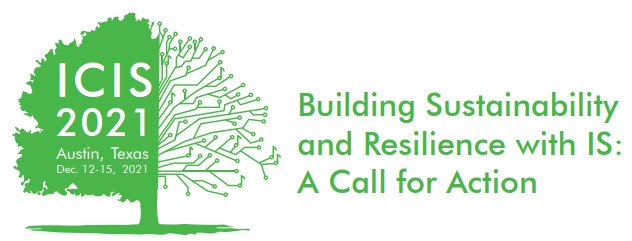Digital Learning and IS Curricula
Loading...
Paper Number
2589
Paper Type
Completed
Description
As distance learning and large-scale learning environments continue to grow, interactive knowledge distribution is becoming a more challenging task. Although studies show that active and emotional student engagement is the best way to achieve promising educational outcomes, educational institutions still face challenges in providing students with interactive learning scenarios. Pedagogical conversational agents (PCAs) offer one way for educational settings to create such scenarios. Despite the increasing research interest of PCAs in research, there is a lack of shared knowledge about the different design elements of PCAs. Hence, our goal is to develop a taxonomy to classify PCAs into three main categories (structure, technology, task/people). In addition, we aim to provide preliminary results on possible outcome variables that could result from the presented design elements of the taxonomy. Our findings are intended to provide researchers and practitioners with deeper insight into the field of PCAs to possibly guide design decisions.
Recommended Citation
Weber, Florian; Wambsganss, Thiemo; Rüttimann, Dominic; and Söllner, Matthias, "Pedagogical Agents for Interactive Learning: A Taxonomy of Conversational Agents in Education" (2021). ICIS 2021 Proceedings. 13.
https://aisel.aisnet.org/icis2021/diglearn_curricula/diglearn_curricula/13
Pedagogical Agents for Interactive Learning: A Taxonomy of Conversational Agents in Education
As distance learning and large-scale learning environments continue to grow, interactive knowledge distribution is becoming a more challenging task. Although studies show that active and emotional student engagement is the best way to achieve promising educational outcomes, educational institutions still face challenges in providing students with interactive learning scenarios. Pedagogical conversational agents (PCAs) offer one way for educational settings to create such scenarios. Despite the increasing research interest of PCAs in research, there is a lack of shared knowledge about the different design elements of PCAs. Hence, our goal is to develop a taxonomy to classify PCAs into three main categories (structure, technology, task/people). In addition, we aim to provide preliminary results on possible outcome variables that could result from the presented design elements of the taxonomy. Our findings are intended to provide researchers and practitioners with deeper insight into the field of PCAs to possibly guide design decisions.
When commenting on articles, please be friendly, welcoming, respectful and abide by the AIS eLibrary Discussion Thread Code of Conduct posted here.




Comments
04-Learning